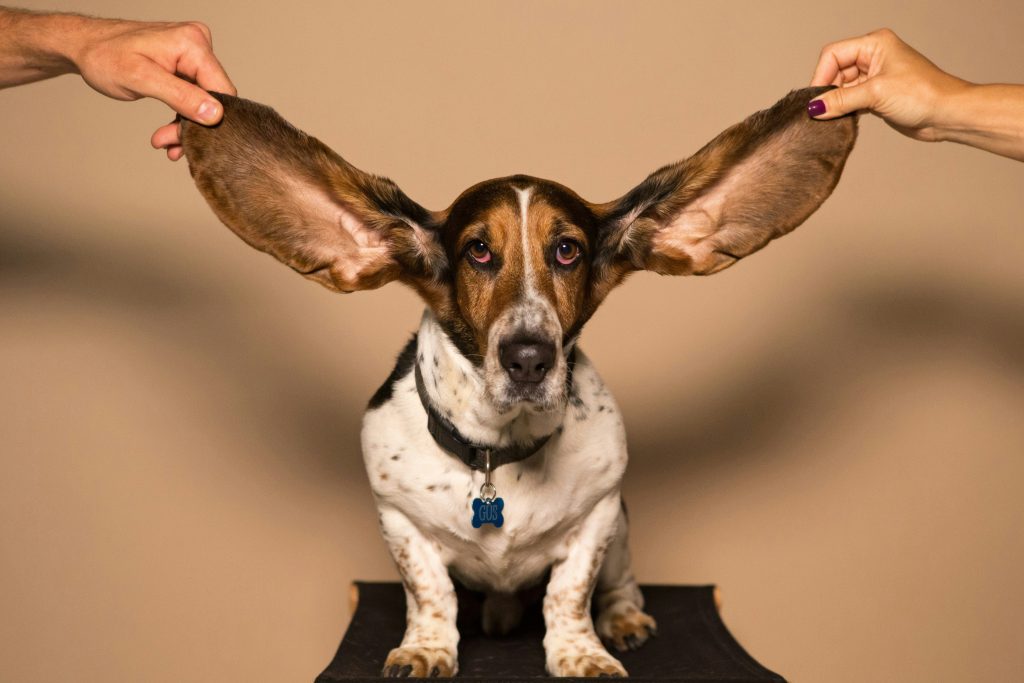How Vets Diagnose and Treat Ear Infections
If your dog is scratching, shaking their head, or has smelly discharge from the ears, it’s time for a vet visit. But what exactly happens at the clinic—and how do veterinarians determine what’s wrong?
In this post, we’ll explain how ear infections are diagnosed and treated, so you’ll know what to expect and how to help your dog heal.
Step 1: Physical Examination
The first thing your vet will do is perform a thorough physical exam, starting with the ears. They’ll look for signs such as:
-
Redness or inflammation
-
Discharge (color, smell, consistency)
-
Swelling inside the ear canal
-
Sensitivity or pain when touched
They’ll also check the other ear to see if both are affected, and inspect the skin and body for signs of allergies, parasites, or infections that could be linked to the ear issue.
Step 2: Otoscopic Exam
Using a special tool called an otoscope, your vet will carefully look deep inside your dog’s ear canal. This allows them to:
-
Assess how far the infection extends
-
Check for foreign objects or wax plugs
-
Look for growths, tumors, or structural problems
-
Examine the eardrum (if visible)
The otoscopic exam helps determine whether the infection is outer ear (otitis externa) or has spread deeper.
Step 3: Ear Swab and Microscopy
To get a clear picture of what’s going on inside the ear, your vet will likely take a sample of the discharge using a cotton swab. This sample is placed on a slide, stained, and viewed under a microscope.
They’ll check for:
-
Bacteria (e.g., cocci or rods)
-
Yeast (often Malassezia)
-
Ear mites (especially in puppies)
-
Inflammatory cells
This simple test is key to choosing the right treatment, since not all infections are caused by the same organisms.
Step 4: Culture and Sensitivity (If Needed)
For chronic or severe infections, especially those not responding to treatment, your vet may send a sample to a lab for culture and sensitivity testing. This test grows any bacteria present and determines which antibiotics will be most effective.
This is important if:
-
The infection keeps coming back
-
Multiple treatments have failed
-
There’s concern about antibiotic resistance
-
Middle ear involvement is suspected
Treatment Options for Dog Ear Infections
Once your vet has diagnosed the infection, they’ll recommend a treatment plan tailored to your dog’s condition.
🧴 1. Ear Cleaning
Before any medicine is applied, the ear must be properly cleaned. Your vet may use:
-
A medicated ear cleaner
-
A flushing solution (for heavy debris)
-
Gentle suction or swabs
Cleaning helps remove buildup so medications can reach infected tissues.
Note: Never clean your dog’s ears at home during an active infection without vet guidance. You could push debris deeper or damage the ear canal.
💊 2. Topical Medications
These are applied directly into the ear and may include:
-
Antibiotics for bacterial infections
-
Antifungals for yeast overgrowth
-
Steroids to reduce inflammation and itching
-
Combination products for mixed infections
Some topical meds are applied daily, while others are long-acting and given as a single in-office treatment.
💊 3. Oral Medications
In more serious cases—especially when the infection has spread deeper—your dog may need:
-
Oral antibiotics
-
Oral antifungals
-
Anti-inflammatory drugs
-
Medications to address underlying issues like allergies
Your vet will base this decision on how severe the infection is and whether it’s affecting your dog’s overall health.
🧽 4. Treatment for Underlying Causes
If the infection is caused by:
-
Allergies → Your dog may need a hypoallergenic diet or allergy meds
-
Ear mites → All pets in the home may need parasite treatment
-
Hormonal imbalance → Blood tests and long-term management may be needed
-
Foreign object → Surgical removal may be necessary if the object is deep
Treating the root cause is essential for preventing recurrence.
What About Home Remedies?
It’s tempting to try coconut oil, vinegar, or over-the-counter ear drops at home. But without knowing what’s causing the infection, these remedies can:
-
Worsen the irritation
-
Delay proper treatment
-
Damage the eardrum
Always consult your vet before applying anything at home, especially if your dog has ongoing symptoms.
Monitoring and Follow-Up
Most dogs begin to feel better within a few days of treatment. However, it’s critical to complete the entire treatment and return for a recheck if your vet recommends it. Incomplete treatment can allow the infection to return stronger.
If symptoms return after treatment, call your vet promptly—chronic ear infections can lead to hearing loss or permanent damage if left untreated.
Final Thoughts
Veterinarians use a detailed diagnostic process to figure out what’s causing your dog’s ear infection—and the right treatment depends on what they find. With proper care and follow-up, most infections clear up quickly and completely.



